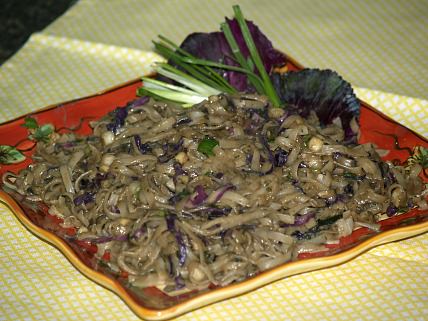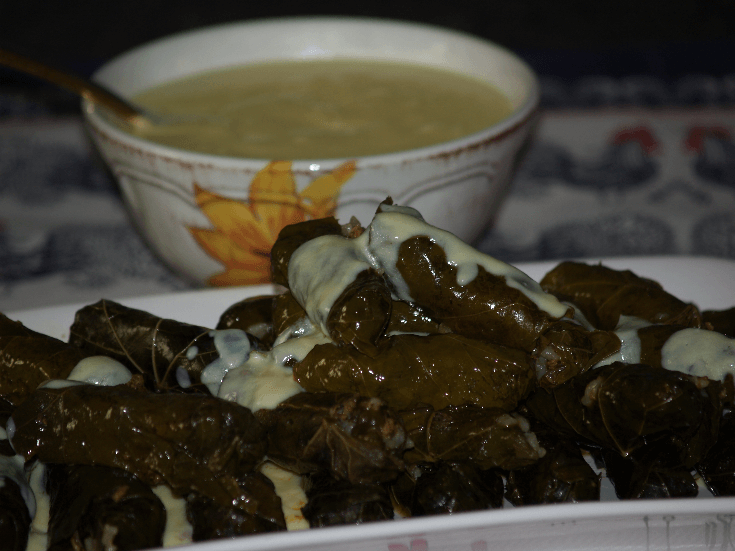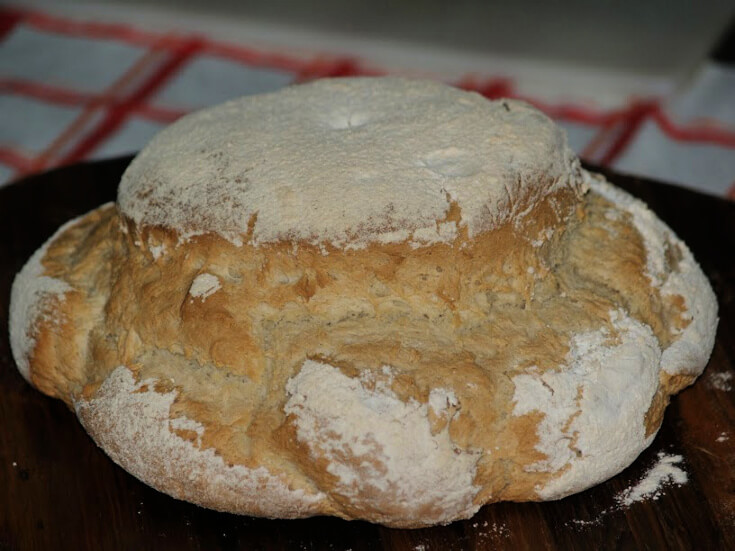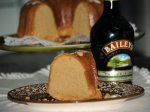- Painless Cooking
- Spices
- Dry Herbs
How to Dry Herbs
If you learn how to dry herbs, you can harvest and dry during the growing season. This way you can have herbs all year round. With the moisture properly removed from the leaves they will be good to use all year. They will provide a good flavor for all your cooking. Herbs can be dried in a dehydrator, in the oven or just hung in the open air to dry. Dad often would run a rope across our basement ceiling and hang herbs and many other vegetables to dry like that.
It is important to know the right time of harvesting herbs. They should be at their peak right before they begin to flower. It is important to pick the herbs early in the morning after the dew has dried out so there is no added moisture to cause mold. It is also important to pick immediately after the dew dries and before the sun gets too hot. The sun will bake out the oils which produce the good flavors.
If you know how to dry herbs you know to use only the healthy plants. They must be free of bugs and disease. Remove any dead or wilted leaves and all weeds mixed in. Do not mix the herbs and handle them as little as possible. Cut the herbs with sharp scissors leaving the leaves on the stems. Stems are good for hanging. Do not wash the herbs. Washing will add extra moisture.
Herbs can be hung in bunches to dry, especially those with long stems. Do not make the bunches any thicker at the stems than one inch. A dark, dry, warm place with good air flow is the ideal place. This might be a barn, shed or dry basement. Tie bunches with string or rubber bands and leave plenty of space between bunches for air circulation. To prevent dust from accumulating in the herbs you can cut holes in the bottom of small paper bags and pull the stems of the bunches up through the hold before hanging them.
How to dry herbs with delicate flower heads and petals? This is possible simply by making a single layer on a screen or something which offers good air flow. Find the same kind of condition; dry, warm and ventilated. Set the screen on blocks of some kind so as not to limit the ventilation.
Without a dehydrator, the oven is how to dry herbs if you want quick results. Put the oven on the lowest possible temperature, leave the door ajar and place inside. Depending on which herbs you are drying, this can be done in a few hours. If you have a gas stove with a pilot light, this will also dry them without turning on the oven.
Most people who make it a habit to dry their homegrown herbs each year have a dehydrator. Instructions may vary somewhat so just follow the manufacturer’s suggestions closely. Some people find the microwave is the easiest way to dry herbs. A minute in the microwave will take days off the drying process. Place herbs in a single layer between two sheets of paper towels, turn on the microwave and THEY MUST BE CHECKED EVERY 30 SECONDS SO AS NOT TO BURN.
If you have successfully found how to dry herbs, the leaves will crumble between your thumb and finger when pressed. They will crumble into a coarse meal like texture. If they bend or show any sign of moisture you will need to dry them more thoroughly. The stems will snap and not bend if they are dry enough.
After proper drying, strip whole leaves from the stems and store in glass (no plastic) air tight containers. Whole leaves will retain their flavor longer. The roots can be ground and also stored in a tight glass container. Make sure you label and date the containers. If you ever see moisture appear in the jars remove herbs and dry more. Store preserved herbs in a cool dark place for lasting storage.
SPICY THAI NOODLES RECIPE
When you learn how to dry herbs you can make your favorite dishes like this recipe anytime of the year.
- 1 ¼ Cups water
- 2 ½ Teaspoons brown sugar
- 2 Teaspoons soy sauce
- ½ Teaspoon garlic powder
- 1 Teaspoon dried parsley
- ¾ Teaspoon seasoned salt
- ½ Teaspoon cornstarch
- ¼ Teaspoon red pepper flakes
- ¼ Cup chunky peanut butter
- ¼ Cup sliced green onion (White and green parts)
- 1 Teaspoon dried cilantro
- 8 Ounces rice noodles (Cooked, drained and kept warm)
- 1 ½ Cups shredded red cabbage
In a pot combine water, sugar, soy sauce, garlic powder, parsley, salt, cornstarch and pepper flakes.
Bring mixture to a boil; reduce heat to low and simmer uncovered for 5 minutes.
Cool mixture 10 minutes; stir in peanut butter, green onion and cilantro.
Add noodles and cabbage; toss to coat and serve immediately; serves 4.
HERB RICE SALAD RECIPE
- 1 ½ Cups long grain rice
- 3 Cups water
- 1 ½ Teaspoon salt (About)
- 3 Tablespoons fresh lemon juice
- 2 Tablespoons minced shallots
- 2 Teaspoons Dijon mustard
- ¼ Cup olive oil
- 1 Medium cucumber finely diced with seeds removed
- 1 Cup frozen peas thawed
- 1 Tablespoon dried parsley
- 1 ½ Teaspoons dried dill
Combine rice, water and 1 teaspoon salt in a medium saucepan; bring to a boil.
Cover saucepan with lid; reduce heat to low and simmer rice for about 18 minutes until tender.
Remove pan from heat and fluff rice with fork; spread over baking sheet to cool completely.
Combine lemon juice, shallots and mustard in a small glass bowl; whisk in oil, salt and pepper.
Combine and toss lemon juice mixture with rice shortly before serving.
SPAGHETTI SAUCE RECIPE one of the many recipes to make after you learn how to dry herbs
- ½ Cup olive oil
- 1 Large cubed eggplant
- 2 Medium chopped onions
- 1 Green bell pepper chopped
- 4 Cloves minced garlic
- 1 Can (12 ounces) tomato paste
- 1 Quart chopped whole tomatoes
- 2 Tablespoons basil
- 1 Tablespoon oregano
- 3 Bay leaves
- 1 Tablespoon parsley
- Salt/ pepper to taste
- ½ Cup red wine
Sauté eggplant, onion and pepper in olive oil until tender.
Add remaining ingredients except for the wine; mix well.
Simmer until thick about 30 minutes.
Add wine before serving stirring to blend in and heat through.
Serve over pasta.
BASIL PESTO RECIPE
When learning how to dry herbs, save some fresh basil and parsley for the following recipe.
- 2 Cups fresh basil leaves packed
- 2 Large cloves garlic
- ½ Cup pine nuts
- ¾ Cup fresh grated Parmesan cheese
- ½ Cup fresh parsley leaves
- 2/3 Cup extra virgin olive oil
Combine basil and garlic in processor and blend until smooth.
Add pine nuts, cheese and process until smooth.
Pour olive oil in a slow steady stream and process until smooth and creamy.
If pesto is too thick, add a tiny bit of warm water and blend in.
Serve tossed in cooked pasta or in many other recipes.





